Fair use, we know, is a balancing test. What that means, fundamentally, is that whereas all of the other exceptions to copyright’s exclusive rights have a set of requirements or circumstances that must be fulfilled for the exception to apply, the four fair use factors work differently. They are not a list of requirements, such that every fair use must fulfill some standard in regard to each factor. Rather, the four factors describe “an equitable rule of reason” where these factors, and others, are balanced to help a court determine if the specific use in question is, given all of its particular circumstances, fair.
The question of how the factors relate to each other is persistent. If we view them, as I think we should, as inquiries that direct courts to examine pertinent circumstances, they will obviously overlap and interrelate. But courts often apply the factors quite mechanically, with the result that there are quite a few 2 to 2 “ties.” In those situations, and at other times, courts will sometimes suggest that one factor or another has more weight or importance than the others. Thus the balancing test can become unbalanced.
One case — Harper & Row v. Nation Enterprises, 471 U.S. 539 (1985) — has been particularly pernicious in its impact. In regard to two factors, readings of this case have contributed to a misconception of the fair use factors.
First, the case was often cited for the proposition that one could not make a fair use of an unpublished work (although it does not quite say this). Such a rule would give the second fair use factor determinative weight when unpublished works were being analyzed. Congress address this problem shortly after the case was decided by amending the fair use provision to specifically say that fair use could apply to unpublished works if the equities favored that use.
The second way in which the Harper & Row case impacted fair use was through its assertion that the fourth fair use factor — the impact of the use on the potential market for and value of the work — was “the single most important element of fair use.” In its recent report on “Fair Use Challenges in Academic and research Libraries” a research team associated with the Association of Research Libraries reported on interviews regarding fair use with 65 librarians and identified as one of the common “misconceptions” the belief that the fourth factor was dominant, especially in regard to video. Since the language quoted above from Harper & Row is still out there as part of a Supreme Court precedent, it is worth asking why this belief is, at least sometimes, misleading.
One reason is that even the Supreme Court changes its mind. In its more recent fair use reasoning, the Court focused on the transformative nature of a new use, and emphasized that when a use is transformative, the market analysis is less important. In the well-known “Pretty Woman” case, the court reasoned that transformative uses like parody simply do not occupy the same market space as the original work, so consideration of impact on the market is not as important.
If we generalize this reasoning a bit, it has two important results. First, it reminds us that the factors interrelate in such a way that the importance of one factor may be influenced by facts uncovered as part of the analysis of another factor. That is how fair use ought to work, IMO. Also, the Pretty Woman case, and the transformative analysis in general, is an example of how fair use prevents a plaintiff from using copyright to stifle free speech about the original work. If parody or criticism were subject to an absolute rule about market impact, a critical book review could be enjoined because its quotations from the original, combined with a negative judgment on that original, would inhibit sales and should not, therefore, be judged fair use. We should never allow copyright to work that way, and the flexibility of fair use is a safety valve against should restraints on speech.
Another factor that sometimes gets out of hand is the third one — the amount and substantiality of the portion used. The ARL Report identifies as another misconception the idea that fair use can only apply to a small portion of a work. In fact, many cases that find in favor of fair use, especially cases involving transformations, allow the use of quite large portions of an original. As this blog post reports, a law professor has recently filed an amicus brief in a copyright case making exactly this point, that even using an entire article does nor preclude fair use if the other factors support it. As the brief points out, if there were an absolute rule against using an entire work, fair use would become “an inflexible, one-factor test.”
The lesson from all this, that a fair use analysis must plod through all the factors in light of the specific circumstances and is never subject to “short cuts,” may not be welcome news for all. But it is, nevertheless, good news, since it reminds us that fair use exists to permit uses that are socially valuable but which cannot be anticipated or encompassed within definitive rules laid down in advance.

